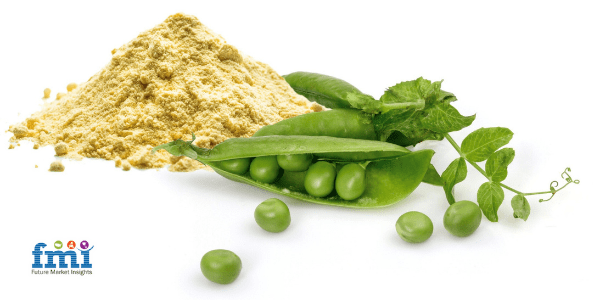Expanding buyer interest in dietary protein has reinforced interest for pea protein around the world. The pea protein market income added up to US$ 3.2 Bn in 2021, as per Future Market Insights (FMI). Showing a CAGR of 14.2% for 2021-31, the market is relied upon to arrive at US$ 12.31 Bn by 2031.
The market’s development direction is projected to remain positive, guided by rising interest for sports sustenance and nutraceutical items. According to FMI investigation, sports nourishment and nutraceutical will represent over 41% of worldwide pea market esteem share, displaying noteworthy development through the figure time frame.
Purchasers are zeroing in on plant-based proteins sources due developing interest in veggie lover and vegetarian slims down, clean name patterns, and the need to limit allergens from creature based items.
Millennial buyers are progressively worried about their wellbeing and sustenance, which has prompted expanded reception of natural and regular food, liberated from added substances, with non-GMO certificates. This pattern is relied upon to expand interest for pea protein in the worldwide market.
The COVID-19 pandemic altogether affected buyer food buying designs. Purchasers are zeroing in on food items that will assist with reinforcing resistance. Additionally, pea protein is a rich wellspring of iron and it assists with working on the wellbeing and strength of buyers.
“The number of vegans and vegetarians on a global scale has risen dramatically in recent years as consumers actively pursue sustainable lifestyles. Following this trend, there has been an increase in demand for vegan and natural products, creating a favorable environment for growth of the market through the coming decade,” says a lead analyst at FMI.
The pea protein industry is affected by development in premium protein lines. Premium item deals are at present standard in Japan, and are progressively separating themselves from private mark choices. Premium ‘chose’ item forms are focused on buyers who will follow through on a greater expense for top notch fixings.
Clean-name food items are becoming famous on the lookout. Pea protein is normally non-GMO and without gluten. In this way, it in a perfect world falls in clean-mark food classes. Rising interest for veggie lover, non-GMO, without gluten and natural items in the food business reinforce request in the pea protein market.
Key Takeaways from the Pea Protein Market Study:
- The U.S. pea protein market leads in North America and records for 82% in 2021. Rising mindfulness towards individual wellbeing from twenty to thirty year olds helps development.
• Germany drives the Europe market, upheld by the presence of key food handling units, representing almost US$ 222 Mn in 2021.
• Japan is arising as a high likely market in East Asia, mirroring a 18% CAGR through 2031, driven by request in the restorative and individual consideration area.
• Customary pea protein holds a portion of 90.8% of the worldwide pea protein market in 2021, upheld by simpler admittance to unrefined components.
• Protein separates, driven by high protein content represented a piece of the pie of 46.3% in 2021 of the worldwide market.
Competitive Landscape
Some of the leading companies offering pea protein products include Glanbia Plc., Roquette Frères, Cargill Inc., Kerry Group PLC, DuPont De Nemours Inc., The Scoular Company, Puris Proteins LLC, Burcon NutraScience Corporation, Cosucra Groupe Warcoing S.A., Bata Food, Shandong Jianyuan Group, Axiom Foods, Inc., The Green Lab LLC and others.
Get more Insights Analysis on this Pea Protein Market@ https://www.futuremarketinsights.com/reports/sample/rep-gb-697



































